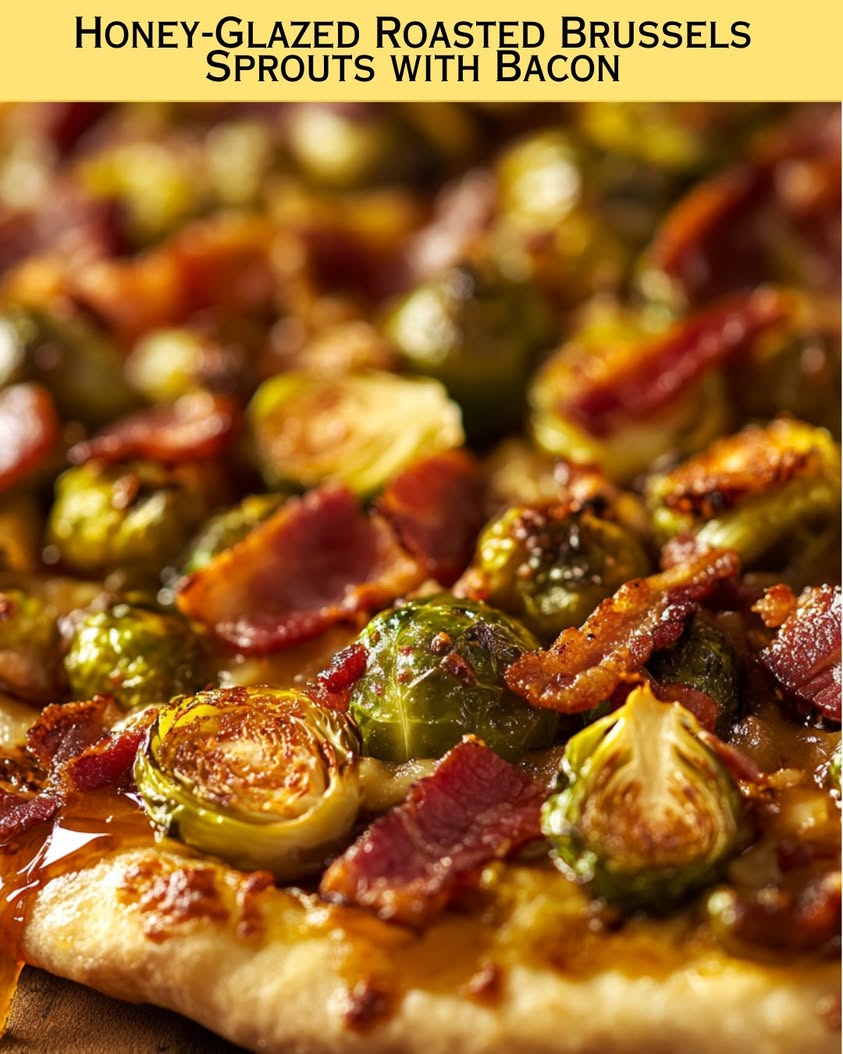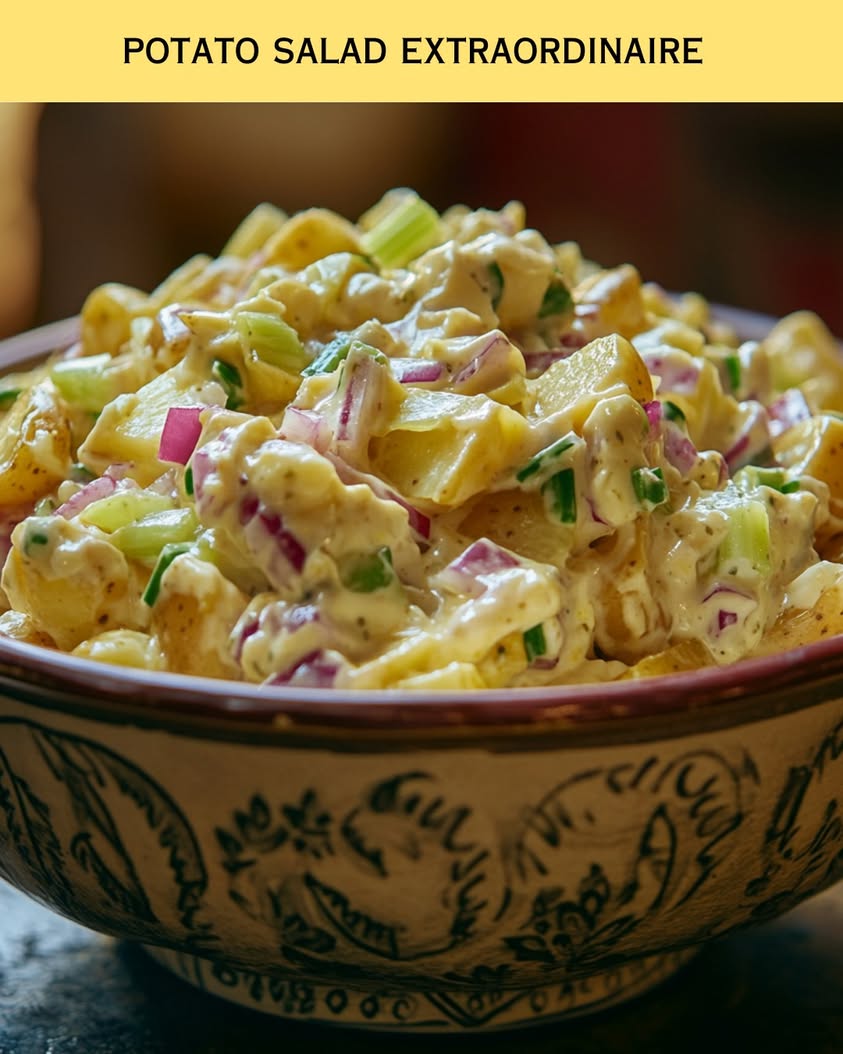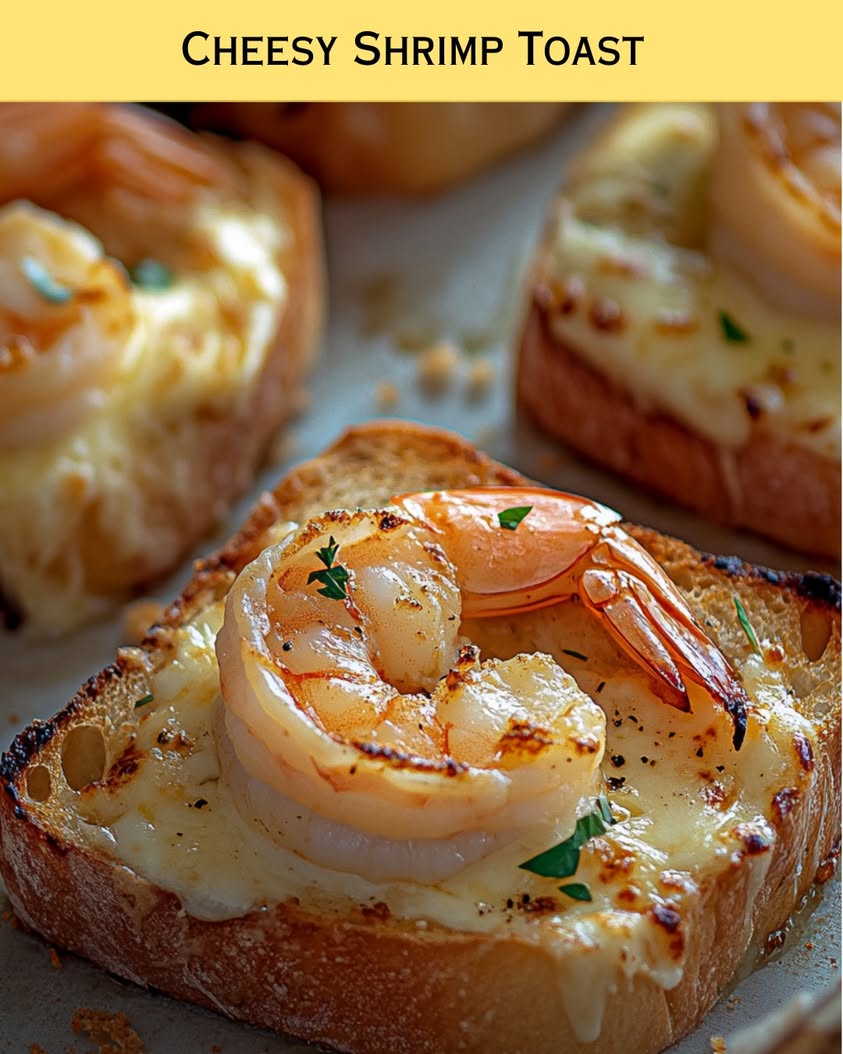Honey-Glazed Roasted Brussels Sprouts with Bacon: A Sweet and Savory Side Dish
Brussels sprouts often receive a bad rap, but when roasted to perfection and glazed with honey, they transform into a delicious and irresistible side dish. This Honey-Glazed Roasted Brussels Sprouts with Bacon recipe combines the earthy notes of Brussels sprouts with the sweetness of honey and the savory crunch of crispy bacon. The result is a mouthwatering dish that truly showcases the beauty of seasonal vegetables. Whether served alongside a holiday roast or as a weeknight treat, this dish is bound to impress.
The cooking method of roasting enhances the natural flavors of the Brussels sprouts, creating a caramelized exterior that melds beautifully with the honey glaze. Crispy bacon adds an extra layer of flavor, making each bite a delightful contrast of textures and tastes. The addition of pepper and garlic elevates this dish, creating a fragrant aroma that will fill your kitchen and leave everyone eager to sit down for dinner.
Quick Recipe Highlights
- Flavor Profile: The sweet and savory harmony of honey and bacon keeps your taste buds excited.
- Texture: Enjoy the contrast of crispy bacon, tender Brussels sprouts, and a sticky glaze.
- Aroma: The tantalizing scent of roasted Brussels sprouts mingling with smoky bacon will make your mouth water.
- Visual Appeal: The golden-brown color of the glazed Brussels sprouts, flecked with crispy bacon, is irresistibly inviting.
- Skill Level Needed: This dish is easy to prepare, making it perfect for cooks of all skill levels.
- Special Equipment: All you need is a baking sheet and parchment paper for easy cleanup.
Recipe Overview
- Difficulty Level: The recipe is rated easy, making it accessible even for beginner cooks who want to impress.
- Category: Ideal as a side dish, this recipe pairs perfectly with meats, fish, or as part of a vegetarian spread.
- Cuisine: This dish embraces the essence of modern American cooking, incorporating comforting, traditional flavors.
- Cost: With affordable ingredients like Brussels sprouts and bacon, this recipe offers deliciousness without breaking the bank.
- Season: Best enjoyed in the fall and winter months when Brussels sprouts are at their peak freshness.
- Occasion: Perfect for holiday gatherings, family dinners, or festive feasts.
Why You’ll Love This Recipe
The blend of sweet honey and savory bacon creates an extraordinary taste experience that you won’t forget. Each mouthful delivers a delightful contrast that leaves you wanting more. Roasting the Brussels sprouts brings out their natural sweetness while ensuring they remain vibrantly green and slightly crisp. The addition of honey not only enhances the flavor but also adds a delightful sheen that makes the dish visually impressive.
Preparation wise, you can throw this dish together in about 35 minutes, making it a perfect choice for a weekday dinner or an elegant addition to a special event. With minimal prep and cook time, this recipe helps you serve up restaurant-quality flavors in the comfort of your home. Whether it’s a holiday feast or a simple weeknight dinner, this dish fits effortlessly into your culinary repertoire.
On the nutritional side, Brussels sprouts are a powerhouse of vitamins and minerals, packed with antioxidants that promote overall health. Additionally, the healthy fats from the bacon provide satiety and flavor. This makes Honey-Glazed Roasted Brussels Sprouts with Bacon a great choice for anyone looking to incorporate more vegetables while still enjoying hearty flavors.
Serving this dish not only satisfies your taste buds but also creates an inviting atmosphere for your guests. The visually appealing presentation and delicious aroma make it a dish that’s perfect for entertaining. Share stories around the dinner table while everyone savors the delightful combination of flavors.
Lastly, this recipe is cost-effective, requiring only a few everyday ingredients that are easy to find and budget-friendly. With Brussels sprouts generally being inexpensive and bacon providing richness, it’s an accessible yet indulgent side dish that you can proudly serve to family and friends.
Historical Background and Cultural Significance
Brussels sprouts can be traced back to ancient times, with origins in the Mediterranean region. However, they gained prominence in Brussels, Belgium, during the 16th century, hence their name. Initially cultivated for their health benefits, these little green gems became a staple in many European diets as people recognized their nutritional value.
Today, Brussels sprouts hold cultural importance, particularly in Northern Europe and Western cooking. Their resilience as a crop means they often thrive even in cooler climates, making them a reliable seasonal vegetable. In the United States, they have gained popularity in contemporary kitchens, often featured in festive meals and as a go-to side dish during holidays.
The evolution of the Brussels sprout recipe has been significant over the years. Traditionally steamed or boiled, many home cooks have shifted to roasting, which enhances the flavor profile and adds a satisfying texture to this vegetable. The incorporation of glazes, like honey, and ingredients like bacon, are modern twists that make Brussels sprouts more appealing.
Regional variations have also emerged, from Asian-inspired sesame and soy sauces to classic European preparations with butter or cream. Each method highlights the adaptability and culinary potential of Brussels sprouts, proving that there are endless possibilities for enjoying this versatile ingredient.
Ingredient Deep Dive
Brussels Sprouts: These mini cabbages are not only nutritionally rich but are also packed with history. High in vitamins C and K, Brussels sprouts are known to be beneficial for immune function and bone health. When selecting, choose firm, vibrant green sprouts that are tightly packed. Store them unwashed in a perforated bag in the refrigerator for optimal freshness and use within a week.
Bacon: A beloved ingredient around the world, bacon brings a savory depth to dishes. Its use dates back thousands of years and has become a staple in many cuisines. Nutritionally, bacon adds protein and fats but should be consumed in moderation. Opt for organic or nitrate-free options for a healthier choice. Store in the fridge and use within a week or freeze for longer shelf life.
Honey: Honey is a natural sweetener that has been cherished for centuries for its health benefits. Full of antioxidants and natural sugars, honey can provide an energy boost and is known to have soothing properties. When choosing honey, darker varieties tend to offer more robust flavors. Store it in a cool place and use within a year for the best quality.
Garlic: An essential flavor booster, garlic has a rich history in various cuisines around the world. Known for its health benefits, including anti-inflammatory properties, garlic deserves a spot in your cooking. Select fresh, firm bulbs and store them in a cool, dark place. For those looking to avoid strong flavors, roasted or sautéed garlic offers a milder sweetness.
Common Mistakes to Avoid
- Choosing the wrong size of Brussels sprouts: Opt for uniform-sized Brussels sprouts to ensure even cooking.
- Overcooking: Leaving Brussels sprouts in the oven too long could lead to mushiness instead of maintaining that perfect crunch.
- Using the wrong temperature: Roasting at too low of a temperature may prevent caramelization, leading to bland flavors.
- Skipping the trim: Not removing the stem and outer leaves can result in tougher, less tender sprouts.
- Overcrowding the baking sheet: Giving Brussels sprouts space allows them to roast rather than steam, achieving the desired texture.
- Neglecting to season: Under-seasoned Brussels sprouts can taste bland and unappealing, so don’t skimp on spices and the honey glaze.
- Using old or stale bacon: Fresh bacon is crucial for that crispy, savory addition. Check expiration dates to avoid unpleasant flavors.
- Forgetting to preheat the oven: Starting with a hot oven helps achieve that perfect roast.
- Not tasting as you go: Adjust the sweetness or saltiness of the glaze by tasting while cooking.
- Ignoring storage: Properly store leftovers to maintain freshness and avoid spoilage.
Essential Techniques
Roasting: This method is vital for achieving that sought-after caramelization. To master roasting Brussels sprouts, ensure they are evenly spread out on a baking sheet to allow hot air to circulate and create a golden-brown exterior. Keep an eye on color and texture, aiming for a crisp exterior while ensuring the interior remains tender.
Making a glaze: Crafting a honey glaze elevates this recipe. Combine honey with elements like garlic, salt, and pepper to create a balance of flavors. Ensure the mixture is evenly drizzled over the sprouts before roasting to maximize flavor integration.
Pro Tips for Perfect Honey-Glazed Roasted Brussels Sprouts with Bacon
Use fresh ingredients: Always opt for fresh Brussels sprouts and bacon to ensure the best flavor.
Choose quality honey: Select a high-quality honey that adds depth and character to your glaze.
Adjust the sweetness: If you prefer a less sweet glaze, reduce the amount of honey or balance it with citrus juice.
Mix-seasoning for an extra kick: Feel free to include spices like paprika or cayenne pepper for added flavor complexity.
Experiment with herbs: Fresh herbs such as thyme or rosemary offer wonderful aromatic notes and can enhance the overall taste.
Monitor the roasting closely: Different ovens may vary in temperature; check your Brussels sprouts frequently to avoid overcooking.
Allow flavors to meld: After roasting, let the dish sit for a few minutes before serving to allow the flavors to develop further.
Don’t discard the leaves: The outer leaves that fall off during roasting become crispy, similar to chips, and are a delightful treat.
Variations and Adaptations
Feel free to explore different flavor profiles by incorporating regional variations. You can add Asian-inspired flavors by using soy sauce or sesame oil instead of honey. For a Mediterranean twist, try tossing in olives and sun-dried tomatoes before roasting.
Seasonal adaptations could include using maple syrup in fall or honey citrus during the spring, giving the dish a fresh, vibrant taste. Dietary modifications can easily be made by substituting bacon for a plant-based alternative like smoked tempeh or mushrooms.
For flavor variations, adding nuts like walnuts or pecans before serving enhances the dish’s nuttiness and crunch. Texture modifications could involve mixing in crispy shallots or breadcrumbs for an added layer of flavor and texture. Finally, consider presentation alternatives, such as arranging on a colorful platter with fresh herbs for a visually appealing centerpiece.
Serving and Presentation Guide
Plate your Honey-Glazed Roasted Brussels Sprouts with Bacon in an attractive serving dish for an inviting presentation. A sprinkle of freshly chopped herbs, like parsley or chives, can add vibrant color. Serve warm alongside your main dish, whether it be a hearty roast or grilled chicken, to elevate the meal.
Traditional accompaniments include roasted meats, but for a modern twist, pair them with an arugula salad for a refreshing contrast. Consider temperature; serving these sprouts warm ensures they retain their delightful texture and flavor. Portioning can be done family-style, allowing guests to serve themselves, or plated individually for a more sophisticated dining experience.
Wine and Beverage Pairing
For a delightful pairing with Honey-Glazed Roasted Brussels Sprouts with Bacon, a medium-bodied white wine like Chardonnay or Sauvignon Blanc works wonders. The acidity of these wines complements the sweetness of honey while balancing the saltiness of bacon.
If you prefer a red option, try a light Pinot Noir, whose subtle flavor will not overpower the dish. For non-alcoholic alternatives, consider a sparkling apple cider or a citrus-spiked mocktail to mirror the dish’s sweetness. When serving, allow your beverage to be slightly chilled to refresh your palate as you enjoy this creation.
Storage and Shelf Life
You can store leftover Brussels sprouts in an airtight container in the refrigerator for up to three days. Reheating can be done in an oven to retain crispiness or in a microwave for convenience. However, in the microwave, they may lose their texture.
If you want to freeze them, do it before roasting. Blanch Brussels sprouts in boiling water for a couple of minutes, then cool them in ice water and pack them in freezer-safe bags, where they can last for up to six months. Be sure to label packages for ease and clarity.
Reheating guidelines for cooked, frozen Brussels sprouts include baking them at 375°F until heated through. Be cautious of overcooking them; reheating should focus on warming, not cooking.
Make Ahead Strategies
To save time, you can prep your Brussels sprouts a day in advance by trimming and halving them. Store them in an airtight container in the refrigerator until you’re ready to roast.
For the glaze, whip it up ahead of time and keep it refrigerated; just ensure that you bring it to room temperature before using. Once assembled, the dish can be covered and stored in the refrigerator for up to a day. However, it’s advisable to roast them closer to your serving time for optimal freshness.
Consider making extra and packing individual servings for easy lunches. Allow sprout portions to cool before packing to avoid condensation.
Scaling Instructions
If you need to halve the recipe, simply reduce all ingredients by 50%. This keeps the flavor profiles intact while accommodating smaller gatherings.
For larger events, doubling or tripling the recipe is simple; just ensure that your baking sheets have adequate space to avoid overcrowding. Popular modifications include roasting in batches if your oven lacks space.
Timing may also be affected when scaling; larger batches may require a few more minutes in the oven to cook evenly. Keep an eye on the sprouts, adjusting baking times as necessary.
When storing larger servings, use multiple containers rather than one large container for better preservation of flavor and texture.
Nutritional Deep Dive
Brussels sprouts are low in calories yet high in vital nutrients, making them an excellent addition to any diet. Each serving is packed with dietary fiber, which aids in digestion and creates a feeling of fullness.
In terms of micronutrient analysis, these sprouts are rich in vitamins C and K, contributing to improved immune function and bone health. Additionally, they contain antioxidants that protect cells from damage.
Health benefits of incorporating Brussels sprouts into your meals are plenty, but moderation is key if you’re watching sodium intake due to bacon’s high salt content. Depending on portion size, ensure a balance for optimal health benefits while enjoying this dish’s indulgence.
For those managing their weight, this recipe can promote satiety thanks to its fiber and protein content. Combine with a protein-rich main course to create a well-rounded meal that satisfies craving without excess calories.
Dietary Adaptations
For a gluten-free variation, simply use gluten-free bacon or omit bacon altogether and substitute with a sprinkle of smoked paprika for added flavor.
To make the dish dairy-free, there’s no need for any dairy products, allowing vegans to enjoy it as is. Plant-based bacon or mushrooms can be incorporated for that same savory essence without any animal products.
For keto followers, the inclusion of bacon and Brussels sprouts aligns perfectly with low-carb aspirations. Adjust the honey quantity to manage sugar intake effectively.
Paleo enthusiasts can adapt this recipe by replacing honey with a natural sweetener like maple syrup, ensuring all ingredients remain within the guidelines set by this dietary approach.
Individuals following low-FODMAP diets can limit the number of Brussels sprouts consumed and focus on bacon for protein while monitoring fiber intake.
Troubleshooting Guide
If your Brussels sprouts come out mushy, you may have overcooked them or chosen overripe sprouts. Next time, ensure they’re fresh and keep a close eye on the cooking time.
A flavor imbalance might arise if you under-season the sprouts or have too much honey. Adjust the seasoning gradually, tasting as you go to find the right balance between sweetness and savory.
If your sprouts aren’t browning, your oven temperature may be too low; crank it up for the last few minutes of cooking to encourage caramelization.
Should you struggle with bacon not crisping, try spreading it out on the baking sheet without overlapping. Consider pre-cooking it a bit before adding to the sprouts for better results.
Keep an eye on the cooking time, and don’t be afraid to remove the sprouts once they’re perfectly roasted, rather than waiting for the whole batch to finish.
Recipe Success Stories
Many community members have shared their successes when attempting this recipe, often praising its simplicity and impressive taste. One reader suggested substituting the honey with agave for a unique twist that proved to be a hit during a potluck.
Another user adapted the dish to be a complete meal by adding quinoa, which turned out to be both filling and nutritious. Feedback on presentation has also been overwhelmingly positive, with many posting pictures of their beautiful, plated sprout dishes.
Readers have found that taking the time to ensure even cooking really elevates the dish, noting that their guests commented on how delicious the combination of flavors worked together. Many novice cooks have reported this dish as their first triumph in mastering roasting techniques, making it an inspiring classic.
Frequently Asked Questions
Yes, you can prep Brussels sprouts up to a day in advance; just store them in an airtight container in the fridge after trimming and halving.
What can I substitute for bacon?
You can use turkey bacon or plant-based alternatives for a similar texture without pork.
Are there any vegan options available?
Yes, you can omit the bacon and use a bit of smoked paprika or liquid smoke for flavor.
Can I use frozen Brussels sprouts?
While fresh is best, frozen Brussels sprouts can work—just thaw and drain them before roasting.
How should I store leftovers?
Pour them into an airtight container and keep them in the refrigerator for up to three days.
Can I reheat Honey-Glazed Roasted Brussels Sprouts?
Yes, reheating in the oven restores their texture; cover with foil to prevent drying out.
Is honey necessary for this dish?
Honey contributes to the glaze, but you can substitute with maple syrup or leave it out.
How do I know when Brussels sprouts are done?
They should be golden brown and tender but still slightly crunchy when bitten.
Can I add other vegetables to this recipe?
Absolutely! Carrots and sweet potatoes can complement the flavors wonderfully.
What’s the ideal temperature for roasting?
A temperature of 400°F for even roasting and caramelization is recommended.
Additional Resources
For those interested in enhancing their cooking prowess, explore related recipes, such as Spicy Roasted Cauliflower or Honey Ginger Glazed Carrots, which utilize similar techniques and flavors.
Look for technique guides focusing on roasting vegetables or mastering glazes, straightforward methods that will elevate your culinary repertoire. Ingredient information for Brussels sprouts and advice on selecting the best seasonal produce can immensely benefit new cooks.
In terms of equipment recommendations, consider investing in quality baking sheets for better heat distribution.
Lastly, review options for seasonal variations; try adding pumpkin or squash during fall for a festive touch, ensuring you always have different seasonal flavors in your meals.
Join the Conversation
Participate in our social media conversations by sharing your own cooking experiences, photos, and variations of the Honey-Glazed Roasted Brussels Sprouts with Bacon recipe. We encourage readers to post their adaptations to inspire the broader community.
Cooking photography tips shared can enhance your food presentation, making dishes even more inviting.
Your reviews are highly valuable and help others find innovative ways to enjoy this delicious dish. Engaging with the community through shared recipes provides a wealth of knowledge and new ideas.
The Recipe
Honey-Glazed Roasted Brussels Sprouts with Bacon
Serves: 4 servings
Prep Time: 10 mins
Cook Time: 25 mins
Total Time: 35 mins
Kitchen Equipment Needed
- Large baking sheet
- Parchment paper (optional)
- Mixing bowl
- Spatula
Ingredients
- 1 pound Brussels sprouts, trimmed and halved
- 4 slices of bacon, chopped
- 3 tablespoons honey
- 2 cloves garlic, minced
- Salt and freshly cracked black pepper, to taste
Directions
- Preheat your oven to 400°F (200°C).
- On a large baking sheet, toss the halved Brussels sprouts with the chopped bacon, honey, minced garlic, salt, and pepper until evenly coated.
- Spread the mixture evenly on the baking sheet; make sure the Brussels sprouts are cut side down for optimal browning.
- Roast in the preheated oven for 20-25 minutes, or until the Brussels sprouts are golden brown and tender.
- Remove from the oven and let cool slightly before serving.
Recipe Notes
- For extra sweetness, drizzle more honey over the Brussels sprouts just before serving.
- Leftover Brussels sprouts can be stored in the refrigerator for up to three days.
- If you prefer, substitute the bacon with turkey bacon or a plant-based alternative for a different flavor.
- Adjust the sweetness according to your taste; feel free to use less honey if desired.




